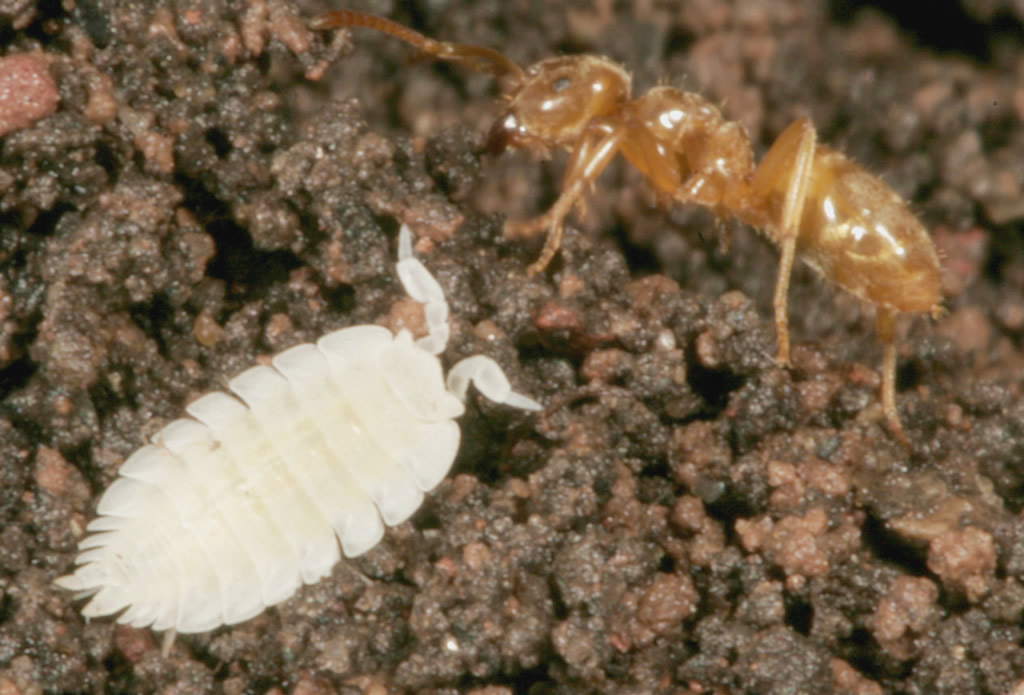Platyarthrus hoffmannseggii Brandt, 1833
Common name
Status:
GB IUCN status: Least Concern
ID Difficulty
Identification
Platyarthrus hoffmannseggii is a small, blind, white woodlouse reaching 5mm in length. Its broad oval body, stout antennae, and its association with ants, are quite characteristic of this species.
None-the-less due to its small size and pale colour specimens are often mistaken for Pygmy Woodlice (Trichoniscidae), such as the rare Metatrichoniscoides leydigii. Conversely, small pale immatures of larger species, such as Porcellio scaber and Oniscus asellus, are frequently mistaken for P. hoffmannseggii.
Distribution
The Ant Woodlouse occurs widely across much of southern Britain and south-eastern Ireland, but becomes genuinely rare in northern England and ultimately restricted to coastal sites in Scotland. Interestingly its distribution is not limited by the ant species with which it is associated.
Habitat
In the southern areas it may be found wherever suitable species of ants occur (Lasius, Myrmica, etc - see Hames (1987) for more information), including gardens, churchyards, road verges and semi-natural grasslands. Lifting stones or paving slabs in sunny locations is the easiest way to find an ants’ nest, and P. hoffmannseggii within.
This summary is based on the detailed account in Gregory (2009).
References
Gregory, S. (2009) Woodlice and Waterlice (Isopoda: Oniscidea & Asellota) in Britain and Ireland. Field Studies Council/Centre for Ecology & Hydrology.
Links
World List of Marine, Freshwater and Terrestrial Isopod Crustaceans: https://www.marinespecies.org/isopoda/aphia.php?p=taxdetails&id=262159








